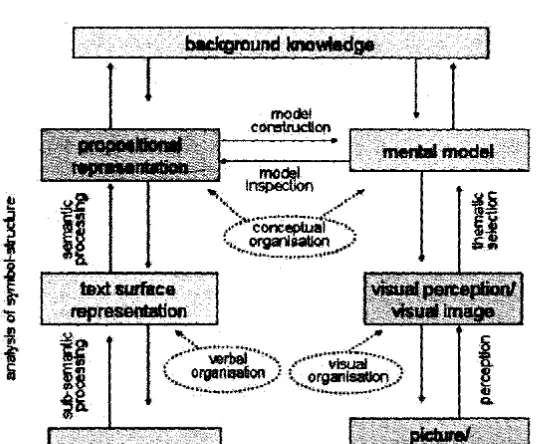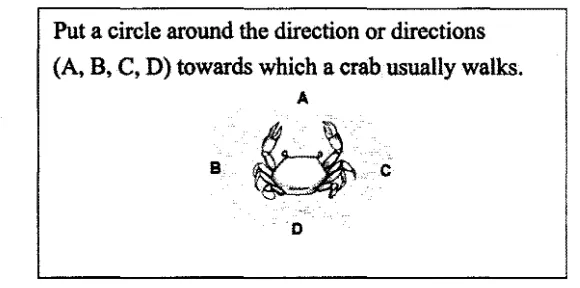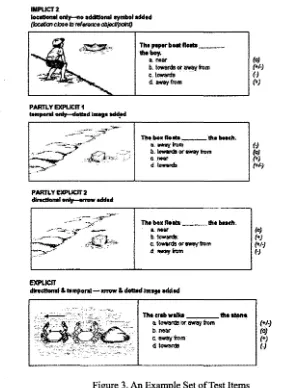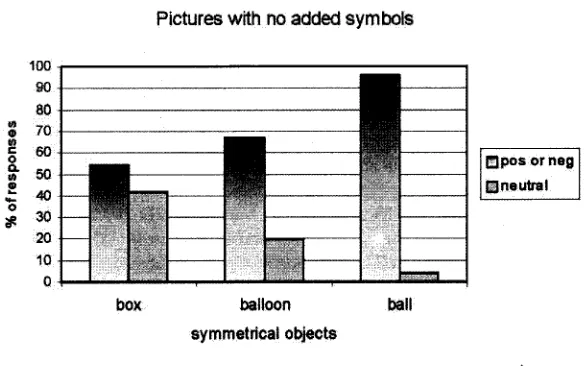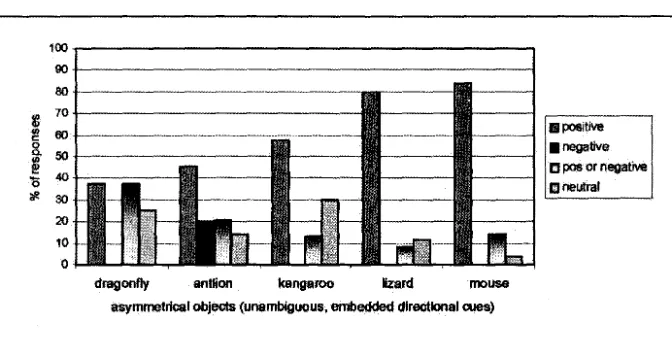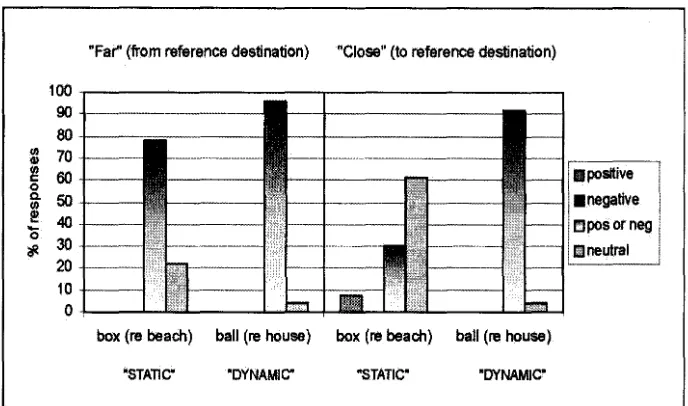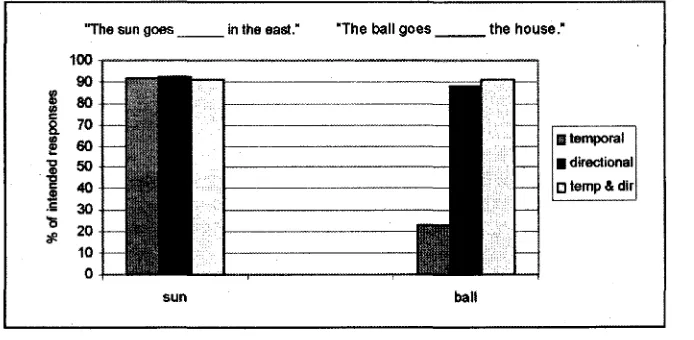Vol. 15, No.2, April 2005
t-
4-
~
~SSN
0853 - 0920WIDYA DHARMA
Majalah Ilmiah Kependidikan
Terakreditasi, November 2002PELAKSANAAN KULIAH LISTRIK MAGNET DENGAN PENDEKATAN PEDAGOGICAL CONTENT KNOWLEGDE DAN EFEKTIVITASNYA
Fr. Y Kartika Budi
EFEKTIVITAS PENGGUNAAN MUSIK KLASIK DALAM MENDUKUNG PEMBELAJARAN MAHASISWADI KELAS
Yohaneslleri~dodo
PICTURESIN FOREIGN LANGUAGE PREPOSITION LEARNING Y Gllarto Pramono
KECERDASAN RASIONAL DAN
ESTETIS
:
BELAJAR DAR! VISI PENDIDIKAN KANT DAN SCHILLERCB. Mulyatno
TINJAUAN TENTANG SITUASI DAN PROSES PEMBAHARUAN PEMBELAJARAN SAINS DENGAN TEORI KONSTRUKTIVISME SOSIAL
T. Sarkim
PEMBELAJARAN KOOPERATIF-KRITIS (CATATAN REFLEKTIF PENGALAMAN PEMBELAJARAN KLASIKAL)
Fajar Santoadi
ASYNCllRONOUS COMPUTER MEDIATED COMMUNICATION
(ACMC): ITS REVIEW AND SOME POSSIBLE APPLICATIONS FOR
TEACHING ENGLISHASAFOREIGN LANGUAGE IN INDONESIA
J.,HaPd~
PERLUNYAICT LITERACYBAGI GURU DEWASAINI
Gregorius lleliarko, s.J. dan Stevanus ~snu Wijaya
SCRIPT WRITING FOR PLAY PERFORMANCE : A STEP BY STEP
GUIDELINE
Agnes Dwina II erdiasti
,
Widya Dhanna, Vol. 15, No.2, April 2005 ISSN 0853 - 0920
WIDYA DHARMA
Majalah Ilmiah Kependidikan
WIDYA DHARMA adalah majalah ilmiah kependidikan yang terakreditasi dan diterbitkan oleh Lembaga Penelitian Universitas Sanata Dharma, dua kali setahun : 0ktober dan April. Majalah ini memuat laporan penelitian, pemikiran, dan pertimbangan buku tentang pendidikan.
Redaksi menerima naskah, baik yang berbahasa Indonesia, maupun yang berbahasa Inggris. Naskah harus ditulis sesuai dengan format yang berlaku di WIDYA DHARMA, dan harus diterima oleh Redaksi paling lambat dua bulan sebelum terbit. lsi karangan yang dimuat tidak selalu mencerminkan pandangan Redaksi.
DEWAN REDAKSI
Pemimpin Umum/Penanggung Jawab/Pemimpin Redaksi Anggota Dewan Redaksi
REDAKTUR AHLI
Dr. A.M. Siamet Soewandi, M.Pd. Dr. Paul Suparno, S.J., M.S.T. Dr. St. Suwarsono
Dr. J. Bismoko Dr. A. Supratiknya Dr. B. Widharyanto, M.Pd. Dr. M.M. Sri Hastuti, M.Si. Drs. G. Moedjanto, MA
Prof. Dr. Nyoman Sudana Degeng, M.Pd ... Universitas Negeri Malang Prof. Dr. Herman J. Waluyo ... Universitas Negeri Surakarta Dr. F.X. Sudarsono, MA ... Universitas Negeri Yogyakarta Dr. J. Sudarminta, S.J ... Sekolah Tinggi Filsafat Driyarkara, Jakarta Dr. Marcelinus Marcellino ... Universitas Atma Jaya, Jakarta Prof. Dr. James J. Spillane, S.J ... Universitas Sanata Dharma/Universitas Gregoriana, Roma
REDAKTURPELAKSANA
SEKRETARIS ADMINISTRASI
ALAMAT REDAKSI
FKIP, Universitas Sanata Dharma Tromol Pos 29, Yogyakarta 55002
Telepon: (0274) 513301, 515352 Fax.: (0274) 562383 E-mail: [email protected]
Ora. Juliana Setyaningsih, M.Pd. Drs. Barli Bram, M.Ed.
J.F. Setya Tri Nugroho, S.Pd.
I
Widya Dharma, Vol. 15, No.2, April 2005 ISSN 0853 - 0920Majalah Ilmiah Kependidikan
DAFTARISI
DaftarIsi ... .
Editorial... m
Pelaksanaan Kuliah Listrik Magnet dengan Pendekatan Pedagogical
Content Knowledge dan Efektivitasnya ... ... ... 101-116 Fr. Y. Kartika Budi
Efektivitas Penggunaan Musik Klasik dalam Mendukung Pembelajaran
Mahasiswa di Kelas ... 117-123 Yohanes Heri Widodo
Pictures in Foreign Language Preposition Learning ... 125-139 Y. G Harto Pramono
Kecerdasan Rasional dan Estetis : Belajar dari Visi Pendidikan Kant
dan Schiller ... 141-152 CB. Mulyatno, Pr
Tinjauan tentang Situasi dan Proses Pembaharuan Pembelajaran Sains
dengan Teori Konstruktivisme Sosial .. ... ... ... ... 153-164 T. Sarkim
Pembelajaran Kooperatif-kritis (Catatan ReflektifPengalaman Pembelajaran
Klasikal) ... 165-174 Fajar Santoadi
Asynchronous Computer Mediated Communication (ACMC) : Its Review and Some Possible Applications for Teaching English as A Foreign
Language in Indonesia ... 175-185 A. Hardi Prasetyo
PerlunyaICT Literacybagi Guru Dewasa Ini ... 187-195 Gregorius Heliarko, S.J dan Stevanus Wisnu Wijaya
Widya Dharma, Vol. 15, No.2, April 2005
PICTURES IN FOREIGN LANGUAGE PREPOSITION
LEARNING
Y.G Barto Pramono
ABSTRACT
This article explores the effects of design features on support given by illustra-tions to English preposition learning. Primary school students in Surabaya learning English completed a set of simple sentences in English from each of which the preposi-tion had been omitted. Each written sentence was accompanied by a static illustration to represent the missing preposition. Analyses of subjects' responses suggested that two major sources of error were (a) subjects 'first-language interference, and (b) "misinter-pretation" of accompanying illustrations. In the latter case, the majority of problems occurred with sentences describing a change in a situation rather than those specifYing an on-going state. Locational, directional, and temporal aspects were identified as de-sign features of an illustration necessary to specifY the motion (change-related) prepusi-tions. In illustrations where such components are lacking, learners' success in selecting the appropriate preposition for a dynamic situation seemed to be related in part to their background knowledge.
Keywords: static illustrations, design features, motion prepOSItIons, verbal visual processing, mental models
1. INTRODUCTION
Pictures are widely used as part of foreign and second language teaching as a complement to texts (written and verbal information). Introductory language teaching materials, ranging from traditional textbooks to electronic resources, all make exten-sive use ofpicmres to support the learning processes. Further, language teachers often use additional pictures to complement these resources in their teaching with the aim of making the meaning of words and expressions clearer to the learners. This reliance on pictures reflects an implicit assumption by practitioners that these visual representa-tions are intrinsically effective in supporting language learning. However, the question arises as to how useful these pictures really are. Is it possible that they could sometimes be redundant or even confusing for the learners? The extent to which the content, form, and presentation mode of a picture complements the text it accompanies is likely to be of crucial importance in determining the instructional effectiveness of such a combination. Educators need a principled basis for allowing them to distinguish be-tween effective and ineffective picmres.
Children learning English as a foreign or second language in many parts of the world have found prepositions to be a particularly problematic area (Brala, 2003; Jabbour-Lagocki, 1990;Pramono,2002a;Skrzypczynska, 1998; South, 1996;\Triend, 1988; Zughoul, 1979). While some of these difficulties are related to specific language knowledge deficiencies, others are related to more general background knowledge.
English teaching materials frequently accompany the short sentences used to introduce or test understanding and use of prepositions with illustrations intended to
depict the relevant prepositional relationships. These illustrations typically include a number of entities that have been arranged in a manner consistent with the preposition concerned. A common application of these depictions involves the presentation of a sentence in which the preposition has been blanked out and the student is required to choose or produce the correct preposition on the basis of information given in the illustration. This type of exercise relies on the fact that a number of prepositions could be used to complete the sentence in a semantically and syntactically acceptable man-ner. Such incomplete sentences are intrinsically ambiguous until an appropriate prepo-sition is added. The intended function ofthe illustration in such cases is to remove the ambiguity and direct the student's choice towards a particular preposition.
A previous study by the author (pramono, 2002b) dealt with such materials in which elementary school students in Indonesia learning English completed a set of simple sentences in English from each of which the preposition had been omitted. Each written sentence was accompanied by a static illustration of the type commonly included in textbooks to represent the missing preposition. Subjects were required to identify the missing prepositions on the basis of information given in the illustration via both multiple choice and completion questions. Analyses of subjects' responses suggested that two major sources of error were (a) subjects' first-language interfer-ence, and (b) "misinterpretation" of accompanying illustrations.
In the latter case, the examination of the illustrations concerned indicated that they could be ambiguous for Indonesian students because the scope oflegitimate mean-ings they allowed for these students was too broad. It was therefore too easy to "mis-interpret" the picture. The majority of such problems occurred with sentences describ-ing a change in situation rather than those specifydescrib-ing an on-godescrib-ing state. The study concluded that locational, temporal, and directional cues would be necessary for illus-trations to specify motion prepositions sufficiently for there to be no problematic am-biguity in the depiction. Locational cues concern the relative positioning of target ob-jects in relation to reference obob-jects, whereas temporal and directional cues involve the
addition of external symbols showing temporal and directional information of target objects. Temporal information indicates that the entity changes position over time. It disambiguates with respect to the temporal aspect, whereas directional information disambiguates in terms of the direction in which the depicted object moves. The study presented in this article, then, aimed to explore the effects of these design features in determining learners' capacity to choose motion (change-related) prepositions that are most appropriate for use in ambiguous incomplete text expressions. Its particular fo-cus was upon the interplay between content depiction and the disambiguation of prepo-sitions in sentences.
2. PICTURE AND TEXT COMPLEMENTARITY
Pictures in illustrated text are thought to facilitate the construction of mental models (Hegarty and Just, 1989; Mayer and Gallini, 1990; Schnotz, Bockheler, and Grzondziel, 1999). One explanation of this facilitation rests on the assumption that verbal and pictorial explanations are processed in different cognitive subsystems which provide different support for the construction of mental models (Mayer, 1997). An-other explanation ofthe effects of pictures within explanatory texts on comprehension has been given by Wolfgang Schnotz, Justus Bockheler, and Harriet Grzondziel (1999). They combine elements of both dual-coding theory and mental model theory. Their
Pictures in Foreign ... (Y.G HarIa"
model offers a more detaile. texts and pictures in knowled reported below.
The model of text an. colleagues (1999) sets out a s. assumed to develop an un~ structure of this model is she side) and depictive (right side prises the text, the mental rep propositional representation tween these representations
u;
prises the picture or diagram, the internal mental model oft: representations is based on PI
Figure 1. Schnotz, Bockheler ;
Pictures in Foreign ... (Y.G Harto P.) Widya Dharma, Vol. 15, No.2, April 2005
model offers a more detailed account than Mayer's model of the interplay between texts and pictures in knowledge acquisition and is used as the framework for this study reported below.
The model of text and picture comprehension developed by Schnotz and his colleagues (1999) sets out a series of processes and sub-processes by which people are assumed to develop an understanding of verbal and pictorial information. The basic structure of this model is shown in figure 1. The model consists of descriptive (left side) and depictive (right side) representational branches. The descriptive branch com-prises the text, the mental representation of the text surface structure (syntax), and the propositional representation of the semantic content (meaning). The interaction be-tween these representations is based on symbol processing. The depictive branch com-prises the picture or diagram, the visual perception or image of the graphic display, and the internal mental model of the depicted subject matter. The interaction between these representations is based on processes of analog structure mapping.
I
[
t
'0t
Figure 1. Schnotz, Bockheler and Grznziel Model Knowledge Acquisition from Texts and Pictures (1999).
of the graphic display with the help of preattentive perceptual processes as well as a mental model and a propositional representation of the depicted subject matter. The propositional representations and mental models interact continuously both in com-prehension of texts and in comcom-prehension of pictures via an interplay of model con-struction and model inspection.
The model suggests that pictures can function to remove potential ambiguity in the verbal (textual) presentation of subject matter by providing additional information. However, the pictorial information needs to be complementary to the textual informa-tion in order to disambiguate the verbal presentainforma-tion. "Complementarity" refers to the condition where both sources of information (text and picture) must be employed in order to reveal the entire meaning of the text-picture/diagram combination. That is, textual information has gaps, which have to be filled by the information contained in the picture, and vice versa (Moliroe, Ballstaedt, and Mandl, 1989). According to Schnotz and his colleagues' model, text comprehension and picture comprehension provide different routes for mental model construction (supported by background knowledge) which implies that one route can replace the other to some extent (Schnotz, 2001). This model provides a framework with which to explain individual differences in multime-dia learning. Various studies have shown that learners with high background knowl-edge do not profit very much from pictures in texts, whereas learners with low back-ground knowledge benefit more. Obviously the high backback-ground knowledge allows mental model construction from the text also without pictorial support, whereas such external support is required for learners with low background knowledge.
In using prepositions for sentence completion, such as "The box is floating _ _ _ _ _ the beach," learners may find it difficult to decide which preposition is the most suitable one because a number of prepositions could be used to complete the sentence in a semantically and syntactically acceptable manner. In that situation, a picture that is complementary to the text information may constrain possible interpre-tations and direct the learner's choice towards a particular preposition. However, this relies upon the picture sufficiently disambiguating the sentence in order to provide this direction. In the context of this study, it is assumed that properly designed features of pictures are likely to disambiguate.
3. THE STUDY: EFFECTS OF DESIGN FEATURES ON LEARNERS CHOICE OF PREPOSITIONS
3.1 Method
Pictures in Foreign ... (Y.G Harto P.) Widya Dharma, Vol. 15, No.2, April 2005
English prepositions were included in the analysis.
Apart from the picture designs of the illustration itself, there are several other variables likely to influence effective learning with pictures. These include students' background knowledge of the depicted contents, the intensity with which they process the picture, and their general visual literacy. For this study, the role of student's back-ground knowledge of the depicted contents is likely to be a particularly important in-fluence on the direction of student's choice of prepositions. A most relevant aspect of background knowledge for this study is the students' familiarity with the depicted con-tent in terms of its common possible movement directions. Thereby, the test of back-ground knowledge of the depicted contents was intended to identify whether or not the subjects were familiar with the direction or directions to which the depicted content (for example, crab) usually moves. One example can be seen in figure 2.
Put a circle around the direction or directions
(A. B.
C, D) towards which a crab
usually
walks.
A
B
U
CD
Figure 2. An Example from The Test of Background Knowledge
The test of general proficiency in English prepositions assessed the subjects' mastery of the target prepositions for the purpose of isolating the effect of design variables. The materials used for this purpose covered all the prepositions used in the test of motion prepositions - both the target prepositions (dynamic) and the distracters (static and dynamic) - but the context for each item and types of options were differ-ent. The two tests had different purposes, which determined the use of different sup-porting media. The test of general proficiency in English prepositions utilised three-dimensional objects to represent the missing preposition in each expression instead of static illustrations.
The test of motion prepositions was used to explore the effect of design fea-tures on how static illustrations remove ambiguity and, thus, direct students' choice towards a particular preposition. The test contained twenty multiple-choice items with each one consisting of a simple sentence in English from which the motion preposition had been omitted.
"neutral" answer (an alternative, other than "positive" or "negative" but also gram-matical).
The static illustration that accompanied each sentence was specifically designed to systematically vary the portrayal of the target preposition's locational, temporal, and directional aspects. The depicted contents used in this test featured two geometrically dissimilar classes of objects: asymmetrical and symmetrical. This was appropriate in a practical sense because in real-world experience, learners encounter both types of ob-jects. However, such a distinction is also important in a theoretical sense because it is assumed that these two different types of objects, by their nature, provide learners with different directional cues. In order to provide a representative cross-section ofthe broad types of contents learners encounter in instructional illustrations, the pictorial materials used in this study included both animate and inanimate objects. Animate objects com-prised two categories: animals and human beings.
Each content (object) in the test was depicted in five different versions (see figure 3):
• Implicit 1 contained locational information in which no external cues (symbols) were added to represent explicitly a change in the depicted situation. The depicted object was placed far from the reference object/destination.
• Implicit 2 contained the same information as that in Implicit 1. However, the loca-tion of the depicted object was changed to be close to the reference object/destina-tion.
• Partly explicit 1 contained temporal information in which a dotted image was added to the depicted object as an external cue to represent a change in situation, that is, to indicate that the entity changes position over time.
• Partly explicit 2 contained directional information in which an arrow was added to the depicted object as an external cue to represent a change in situation.
• Explicit contained both directional and temporal information, that is, both an ar-row and a dotted image were added as external cues to represent a change in situa-tion.
To avoid the possibility of sequence effects, the order of the questions, picture versions, and alternative answers were randomised.
IMPLlCT1
locatlonal only-no additional .,mbol added
(Iocalion far from reference objedlpoiri)
The paper boat flom _ _ _
tn.boy.
ill. towards or awrIoJ .. om b. away from
c. towards
d. near
_--I_pas Of neg (+1-)
_--t_posiliw9 (+)
I !
!
t
Pictures in Foreign ... (Y.G Harto P.) Widya Dharma, Vol. 15, No.2, April 2005
IMPlICT2
loollllOnal onl,...,o addlllomd eymbol added
(/oc8IIm cbse to rWffellCt objecVpoiIIIJ
PARTLY EXPUCIT 1
tempo .... onIr-doUotcll ... add."
PARTLY EXPUCIT 2
dlrectlomd 01l/y-4n'ow added
EXPLICIT
The peper lIoIt 1IoItI _ _ tltlloy •
• near (0)
b. towards or away tom (+1-)
¢. towards (.J
d awey (/()m (+)
Thebe", nom _ _ th. _lOCh •
.. 8W8'fRm (~
b. ~ or 8lI!Iey Rm (o)
c _r (+)
d. l...-.:Is (.")
The b .... flo ... _ _ th.ioaIOCh
. _ (0)
b.towm (+)
c fowwds or away Rm (+/_)
d. awey In>m (-)
dlreCIIomII & telllporll-mow & dotted 1111." added
Th' crab wailea thutollt.
a toward!! or way from (+f..)
b, nm (0)
c way from (+)
d loward$ (.]
Figure 3. An Example Set of Test Items
3.2 Results
The overall proportions of responses for each design feature across all subjects are shown in figure 4. Without added symbols, the rate at which intended ("positive") answers were chosen was considerably (37%) higher than either the "negative" or "neu-tral" answers (10.2% and 22.8% respectively), but marginally lower than for the alter-native that included both the intended answer and its opposite (46.5%). However, with added symbols, the 71 % overall response rate for intended answers was almost double that achieved for the versions without added symbols. In addition, the "intended plus opposite" alternative was chosen at only one third the rate (15.5%). Comparison of results for the three added symbol versions shows that the proportion of subjects who chose the intended answer in the temporal version was considerably less thah for the directional or directional/temporal versions.
100.---,
OO~---_i
80
~---!
70~--- IIIIpositiw (Intended).negstiw (opposite) Cpos or neg (intended
&.
60~ 50
'0 40 .,. 30
20 10 o
I 1iiI~~~r~site)
~--II'--
____
-'
locational
no added symbols
temporal
(dotted Image)
directional temp & dlr
(arrow) (dotted Image plUIJ arrow)
added symbols
Figure 4. Distribution of Res pons for Each Design Feature. N=124
3.2.1 Nature of The Depicted Contents (Symmetrical or Asymmetrical) On the basis of their nature, the depicted contents (objects) in the static illustra-tions used in this study belonged to two types: symmetrical (the form contains no embedded directional cues) such as a box, a ball or a balloon; and asymmetrical (the form contains embedded directional cues) such as a lizard, an antlion or a crab. More detailed inspection of the results for the "no added symbols" design showed that the students' choice of the "positive or negative" answer varied with the nature of the depicted contents. Figure 5 shows that the proportion of subjects choosing the "posi-tive or nega"posi-tive" answer was particularly high when the depicted contents were sym-metrical objects, varying from 55% (box) to 98% (ball). Neutral was the only other alternative chosen.
Pictures with no added symbols
100.---,
w~---
80+---: 70
t---! oo+---~
~
50! 40
¢
'tf. 30
20
10
0+----box balloon
symmetrical objects
ball
Pictures in Foreign ... (fG. Harto P.) Widya Dharma, Vol. 15, No.2, April '2005
The proportion of subjects choosing the "positive or negative" answer was also particularly high when the depicted contents were specific asymmetrical objects the directions of which are inherently ambiguous, varying from 50% (rubbish bin) to 83% (man climbing) as shown in figure 6. The direction of these specific asymmetrical objects are ambiguous because the directional cues embedded in the pictorial form of these objects are unclear.
100
90
80
!
70co 80
§
50e 40
'l>
#. 30
20
10 o
.. ' . '
-•
•
IIII IE
.f
IEflwl '!*I:Ii
I.-I-fi---.
If!l:I _lit.
rubbish helicopter unicycle ctlp
bin
f"
-1-.--
!I.III
.1
L--t-
;;-1!'IIa.
• •
paper
boat
crab girl man climbing climbing
'specifIC' asymmetrical objects (ambiguous, embedded directional ctles)
--.---~
.positive
i
,
.negativ~
flposor
I
I neg !llneulrai
i
,
Figure 6. Distribution of Res pons for "Special" Asymmetrical Objects (providing unclear embedded directional cues) Depicted with "Locational" Version. N=124.
However, when the direction of asymmetrical objects was inherently unam-biguous because the pictorial form of these objects could provide clear and direct em-bedded directional cues, such as a lizard, a kangaroo, or a mouse, the proportion of subjects choosing the "positive" answer (instead of the "positive or negative" one) was particularly high, varying from 58% (kangaroo) to 84% (mouse), although no external cues were added in the illustrations (see figure 7).
100 90
an
Il 70
'" c 60
8. 50
'"
2!40
'0
1f'. ao
20 10 0
dragonfly antijoo kangaroo lizard mouse asymmetrical objects (unambiguous, embedded directional ctle5)
• positiVe • negative fI pos or negatiVe
iii neutral
3.2.2 Symmetrical Objects (Without Added Symbols)
As mentioned earlier, in implicit picture versions (without added symbols), the object was located either far from or close to the reference object/destination. As figure 8 shows, the proportion of subjects choosing the "positive or negative" answer for the item "The box floats the beach" was high (79%) when the text was accompanied by the implicit I picture version in which the box was locatedfar
from the reference destination. This proportion, however, turned out to be low (21.7%) when the text was accompanied by the implicit 2 picture version in which the box was located close to the reference destination, where the "neutral" answer turned out to have more responses (61 %). This pattern was not repeated with the item "The ball goes the house." Cona-ary to "box," the percentage of the "positive or negative" answer for "ball" was always high in both illustrations, whether the text was accompanied by the implicit 1 (96%) or implicit 2 (91 %) picture versions. Hence, the data suggested that for "box,"far from the reference destination appears more likely to direct students to choose the "positive or negative" answer, as for "ball" but, unlike "ball," close to the reference destination appears more likely to direct students to choose the "neutral" answer.
100
90
80
CI)
70 I»
~ 60 0
a. 50
~ 40
a
30
~
20 10 0
"Far" (from reference destination) ·Close" (to reference destination)
!
.posltive!
i8negative
i
Eipos or neg :; f
~--- - --_._F--_-~ ____ .I i .neutral
box (re beach) ball (re house) box (re beach) ball (re house)
'STATIC" "DYNAMIc" "STATIc" "DYNAMIC"
Figure 8. Distribution of Respons for Symmetrical Objects Depicted with "Locational" version (far from and close to the reference object/destination. N=124.
3.2.3 Asymmetrical Objects (with Added Symbols)
Pictures in Foreign ... (Y.G Harto P) Widya Dharma, Vol. 15, No.2, April 2005
100 r---~---__,
90
: 80
I
10!
60 ... 50i
4Pi
3U'0 20
#
10 o
lizard. anliion
I1l41mporal
I
.diredlolllli Ctemp&dlt
(moves in head diredj'm) (moves in opposite helld dire.n)
IIzII'd
actual
direClion
don
Figure 9. Distribution of Intended Responses for Asymmetrical Objects Decipted with Added Symbols. N=124.
3.2.4 Symmetrical Objects (with Added Symbols)
For the items "The sun goes . in the east" and "The ball goes _ _ _ _ the house," both objects ("sun" and "ball") are symmetrical and above ground. However, as figure 10 shQws, the proportion of intended responses chosen by the subjects who were provided with the "temporal" aspect of picture design was quite different in each case. The proportion of intended responses for "the sun" was very high, whereas for "ball" it was very low.
''The sun goes _ _
100
90 I 80
III c
70
8.
III
60 f
""C 50
G>
""C c
40 .!
.5 30
'5 20
~
10 0
sun
in the east." "The ball goes _ _ the house."
ball
III temporal
• directional
ctemp&dir
Figure 10. Distribution of Intended Responses for Symmetrical Objects Decipted with Added Symbols. N=124.
4. DISCUSSION
accompanying picture and the learner's background knowledge. The sentence with a missing preposition is intrinsically ambiguous until an appropriate preposition is added. With the incomplete text alone, learners are unable to make a definitive choice of an appropriate preposition to complete it because the scope oflegitimate meanings is too broad. They must rely on the accompanying picture to disambiguate the text informa-tion and extract relevant informainforma-tion from it in order to create an appropriate mental model of the sentence's meaning. On this basis, they choose the "best" preposition to fill the gap in the incomplete text. However, when the picture itself is ambiguous or misleading for the learners, it does not help them construct a single appropriate mental model. As a result, they can choose a preposition not intended by the designer. The ambiguity ofthe picture could be due to a poorly designed illustration or the learners' unfamiliarity with the graphic convention (that is, the added symbols that give exter-nal cues).
The results of the study suggest that pictures without added symbols are am-biguous. As a result, they are unable to remove the ambiguity ofthe text and, thus, are unhelpful in directing learners towards the intended choice of motion prepositions. Pictures without added symbols are likely to direct the choice of ambiguous or neutral answers when used for symmetrical objects such as a ball or a box. However, the nature of the objects (dynamic for ball or static for box) seems to be a factor that influences the learners' choice of prepositions.
In contrast to pictures without added symbols, pictures with added symbols are able to disambiguate the text and help learners make the intended preposition choice. One possible reason could be that they are more able to constrain possible interpreta-tions and, accordingly, help learners create an appropriate mental model of the sen-tence meaning. However, an arrow (a directional cue) rather than a dotted image (a temporal cue which represents a change in position over time) is a more important design feature in directing learners towards the intended motion prepositions. It seems that the learners are more familiar with an arrow as a graphic convention than with a dotted image. When provided with a picture with a "temporal" cue (dotted image), learners may rely on their background knowledge to choose the intended prepositions. Learners' inability to read the temporal cue in the item "The antlion walks _ _ _ _ the ant," for instance, may cause them to rely on their background knowledge about the depicted content "antlion." Learners who have background knowledge about the wayan antlion usually walks are likely to choose the intended preposition (towards) although its head is facing in the opposite direction. Those who do not have the back-ground knowledge are more likely to choose the opposite alternative (away from), that is, they make the choice on the basis of the direction in which its head is pointing. This implies that the type of external cues may be critical for some asymmetrical objects such as antlion because antlion moves backwards.
ex-Pictures in Foreign ... (Y.G Harto P) Widya Dharma, Vol. 15, No.2, April 2005 .
ample, a crab, a helicopter, and a man climbing contain less clear embedded directional . cues than a lizard, a mouse, and a dragonfly. The likely direction of movement of a crab or a helicopter is not specified by the way they face. They are equally likely to move towards or awlry from something, and a man climbing is equally likely to move up or down: without added symbols, the direction of their motion can be ambiguous. Thus, external cues are likely to be critical for asymmetrical objects such as these. On the other hand, cues are likely to be less critical for asymmetrical objects such as a lizard, a mouse, or a dragonfly, because their directions are inherently unambiguous. These objects contain clear and direct embedded directional cues in their pictorial forms. So directional information is, in principle, already available to the viewer without the need for further external cues.
As Rieber (1994) points out, the first principle of the design of instructional pictures is this: there are times when pictures can aid learning, times when pictures do . not aid learning but do no harm, and times when pictures do not aid learning and are distracting. Clearly, in order for illustrations to aid learning, good design is fundamen-tal (Lowe, 1993). Based on the findings of the study, an instructional designer may need to consider the following in designing static pictures for the learning of motion prepositions. The extent to which pictures are successful in disambiguating the re-quired preposition appears to be related to a number of design features:
• the use of cues. As discussed above, among the cues used in the study (arrows, dotted images, and combinations of arrows and dotted images), the dotted image seems to be less familiar to the learners. Accordingly, this cue is not likely to disam-biguate and direct the learners' choice towards the required prepositions. In order that the picture is unambiguous to the learners, the designer must be sure that any cue used in the illustration is familiar to the learners and that they have been taught its meaning before-hand. Using cues that are more familiar to students is more recommended. Based upon the results of the study, an arrow can be recommended as an external cue to show the dynamics of subject matter, as learners are mostly familiar with this conventional sign for motion;
• . the nature of contents. Symmetrical or asymmetrical objects appear to have differ-ent effects on learners' construction of a dynamic mdiffer-ental model from a static pic-ture of the situation. Since external cues are critical for symmetrical objects (such as "ball"), the picture designer needs to consider giving sufficient explicit cues when designing the dynamics of these objects. Otherwise, the picture will not be helpful, because the pictorial form of these objects cannot provide implicit cues. In addi-tion, external cues are not as critical for objects that are dynamic by nature (such as a ball) as for objects that are static by nature (such as abox). Accordingly, when depicting the dynamics of the "static" object or its motion, explicit external cues are essential;
5. CONCLUSION
The conclusions of the study can be summarised as follows: the "locational" aspect alone (no added symbols) of picture designs appears to be unhelpful in direct-ing the choice of motion prepositions when used for symmetrical objects with no em-bedded directional cues and for particular asymmetrical objects that contain unclear embedded directional cues. However, they are helpful when used for asymmetrical objects that contain clear and direct embedded directional cues; "background knowl-edge" of depicted contents seems to be important in learners' choice of prepositions; and "external cues" seem to be important when there are insufficient cues embedded in the pictorial form of the content. These findings support the theory of text and pic-ture comprehension proposed by Schnotz, Bockheler, and Grzondziel, that is, picpic-tures in illustrated text facilitate the construction of mental models. An appropriate picture can support the construction of an intended mental model and, thereby, can fill any informational gaps the text may create. Ambiguous pictures may hamper the construc-tion of an appropriate mental model and in this situaconstruc-tion learners may rely on their possession of relevant situation-specific background knowledge.
Static pictures can only give an indirect representation of a dynamic situation -the actual dynamics of any change process must be inferred by -the viewer from -the static information. This inference requirement could potentially cause problems in the correct choice of prepositions, so a more direct method of representing the dynamics would be preferable. The author is currently designing learning materials that provide animated substitutes for the static pictures that are less effective in directing the choice of intended motion prepositions and will compare the effectiveness of these two forms of support.
References
Brala, M. M. 2003. Understanding and Translating (Spatial) Prepositions: An Exer-cise in Cognitive Semantics for Lexicographic Purposes. [Online]. www.rceal. cam.ac.uk/Working%20Papersibrala.pdf accessed on July 19,2003.
Hegarty, M., and M.A. Just. 1989. "Understanding Machines from Text and Diagrams." In H. Mandl and J. R. Levin (eds.), Knowledge Acquisitionfrom Pictures (pp. 171-194). Amsterdam: Elsevier Science Publishers B. V.
Jabbour-Lagocki, J. 1990. "Prepositions of Position: An Analysis for Practical Appli-cation in the Classroom". [Microfiche] ERIC Document: ED 332 509. Lowe, R. K. 1993. Successful Instructional Diagrams. London: Kogan Page. Mayer, R. E. 1997. "Multimedia Learning: Are We Asking the Right Questions?"
Edu-cational Psychologist, 32 (1), 1-19.
Mayer, R. E., and J.K. Gallini. 1990. "When Is an Illustration Worth Ten Thousand Words?" Journal of Educational Psychology, 82 (4), 715-726.
Molitor, S., S.-P. Ballstaedt, dan H. Mandl. 1989. "Problems in Knowledge Acquisition from Text and Pictures." In H. Mandl and J. R. Levin (eds.), Knowledge Acqui-sitionfrom Text and Pictures (Vol. 58, pp. 3-35). North-Holland: Elsevier Sci-ence Publishers B.V.
Pramono, H. 2002a. "An Analysis of Difficult Prepositions Encountered by Primary School Students in Surabaya." Unpublished Research Report. Perth: Curtin University of Technology.
_ _ _ _ _ 2002b. "An Analysis of English Prepositional Errors Made by Primary
Pictures in Foreign ... (YG Harto P) Widya Dharma, Vol. 15, No.2, April 2005
School Students in Surabaya." Paper presented at the 6th Humanities Research Students Annual Conference, Curtin University of Technology, Western Aus-tralia.
Rieber, L. P. 1994. Computers, Graphics, and Learning. Madison: Brown & Bench-mark.
Schnotz, W. 2001. "Educational Promises of Multimedia Learning from a Cognitive Perspective." Paper presented at the 9th European Conference on Research on Learning and Instruction (EARLl), FribourgiSwitzerland.
Schnotz,
w.,
1. Bockheler, and H. Grzondziel. 1999. "Individual and Co-operativeLearn-ing with Interactive Animated Pictures." European Journal of Psychology of
Education, 14,245-265:
Skrzypczynska, J. 1998. "Exercises for Practicing the Use of English Prepositions of Place and Direction, Part I." http://www.csa.comlhtbinlids511procskel.cgi.ac-cessed on August 5, 2000.
South, C. 1996. "Teaching Some Common Prepositions." Forum, 34 (1), 42-45.
Vriend;D. L. 1988. "Chinese Speakers and English Prepositions: Problems and
Solu-tions." [Microfiche] ERIC Document: ED 316 029.
